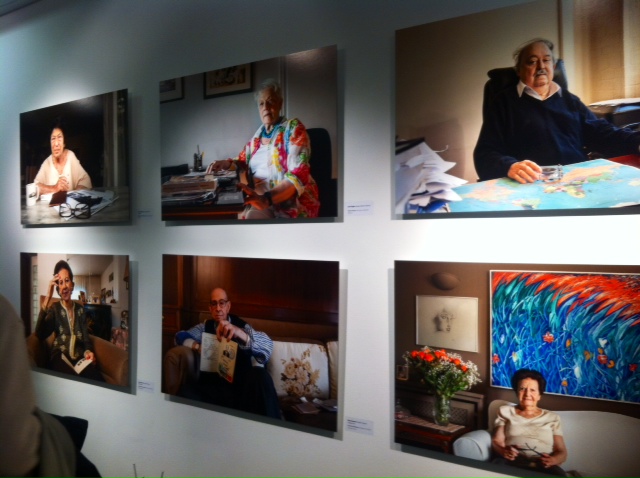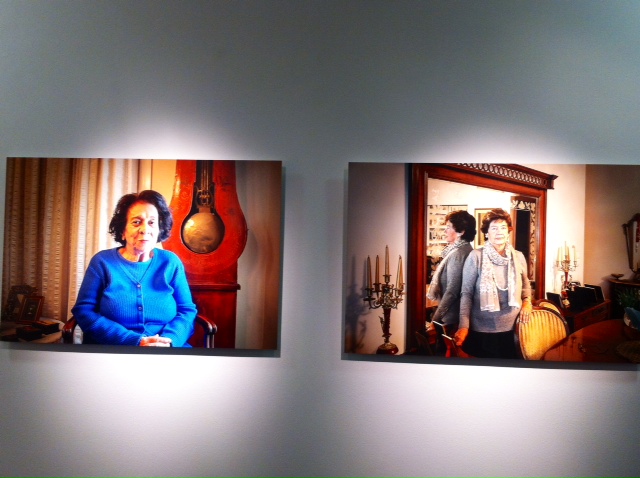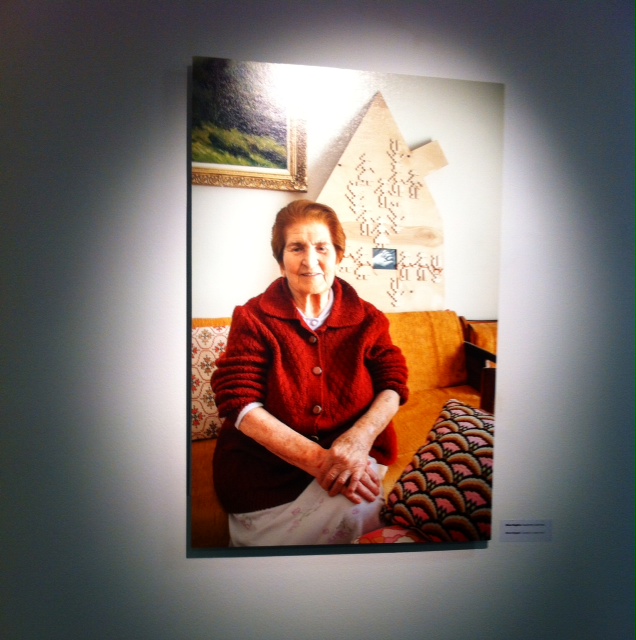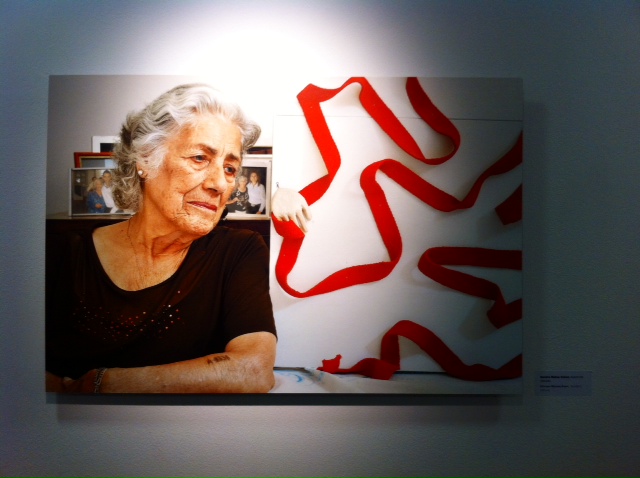Anastasia Balezdrova
A modern exhibition reveals the tragic fate of the once numerous Jewish community in Greece. In 44 portraits artist Artemis Alcalay presents the stories of survivors and returnees from concentration camps, but also of the thousands who lost their lives in a tragic way in Nazi concentration camps during World War II.
The portraits are on display in Cervantes Institute in Athens. They present women and men who are photographed at their homes and works by the artist from the series "Home: a wandering."

In her brief presentation during the opening of the exhibition historian Odette Varon-Vassard said that the Jews presented in it were deported from the German and Italian occupation zones in Greece and were sent to the camps Auschwitz - Birkenau and Bergen - Belsen. "Actually those who were sent to the latter camp proved to be luckier than the rest, since there were no gas chambers there. 11 of the portraits belong to survivors and returnees from it. Treblinka concentration camp is totally missing from the exhibition, where 6,000 Jews were deported from the cities in northern Greece that were in the Bulgarian occupation zone. There were no survivors among them," she said.
The exhibition is arranged at Cervantes Institute to honour Spanish consul in Athens during World War II Sebastian Romero de Radigales. Using his ties, he managed to save the lives of 520 Greek Jews (365 from Thessaloniki and 155 from Athens) by providing them with Spanish passports and delaying their deportation to one of the mass extermination camps. Thus, they were sent to the Bergen-Belsen camp.

Among the portraits, visitors to the exhibition can obtain information about the number of Jewish communities in Greece before and after the war.
From 14 March to 2 August 1943, 19 trains departed from Thessaloniki to the Nazi concentration camp Auschwitz - Birkenau. About 56,000 Jews of Thessaloniki were deported and only about 1,950 of them would survive. 96 per cent of the Jewish community in the city was destroyed.

Rosi Saltiel and Reina Revaj from Thessaloniki (Bergen-Belsen concentration camp)
On 23-25 July 1944, 1,900 members of the Jewish communities on the islands of Rhodes and Kos were deported by ship, initially to the Athens suburb of Haidari and at the end of August the same year to Auschwitz. 200 people survived and returned.
On 9 June 1944, the members of the 2-thousandth Jewish community on the island of Corfu were arrested and deported to Auschwitz. 91 per cent of the community was destroyed, as the number of survivors was only 187.
Jews in Halkida, Ioannina, Arta, Preveza and Trikala were arrested between 23 and 25 March 1944. The community of Ioannina, which was one of the largest in Greece with its 1,850 members, was almost totally destroyed. 163 people returned from Auschwitz.

Nina Negrin from Ioannina (Auschwitz)
In Preveza only 15 Jews out of 250 deportees survived and returned, in Arta only 60 out of 384 survived, in Halkida 170 people survived out of 325. The average largest Jewish community in Trikala had 520 members. Of them, 360 people survived.

Sandra Matsa Cohen from Athens (Auschwitz)
Many of the survivors returned to Greece but settled mainly in Athens and Thessaloniki. A small number returned to their homes and the Jewish communities totally disappeared from different cities. Others, however, did not return at all and left for cities in Western Europe, the US and Palestine.
The exhibition "Greek Jews, Holocaust Survivors, a Visual Narrative" will run from 20 January to 19 March 2016 in Cervantes Institute (23 Mitropoleos str., Athens).